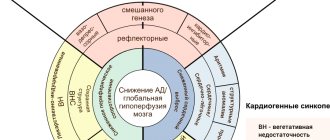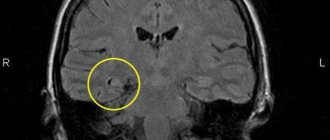For many people, summer means warm, comfortable days that are ideal for eating al fresco or taking long walks during breaks in the air-conditioned office.
But for some of us, summertime means working outside in direct sunlight or repairing buildings without cooling systems.
Working in high temperature environments can pose a particular safety and health hazard because it interferes with the body's most important system, the thermoregulation system.
This article provides an overview of various heat stress-related illnesses and injuries and provides recommendations for recognizing and preventing them.
What is heat stress (overheating, hypothermia)?
Heat stress is a condition when the body cannot get rid of excess heat. When this happens, your body temperature rises and your heart rate increases.
As the body continues to accumulate heat, the person begins to lose concentration and has difficulty concentrating on any task, may become irritable or sick, and often loses the desire to drink. The next stage most often is fainting and even death if the person has not cooled down.
Factors that contribute to heat stress include high air temperature, radiant heat sources, high humidity, direct physical contact with hot objects, and strenuous exercise.
Causes of fainting with seizures
Sudden fainting is most common in young people and children. The main pathogenetic mechanism is considered to be the insufficiency of the apparatus responsible for homeostasis and rapid adaptation to environmental conditions. In most cases, this manifests itself in the form of vegetative-vascular dystonia, which can be primary or secondary, occurring against the background of traumatic brain injury, endocrine disorders, intoxication or infections.
Convulsions after fainting occur due to two main factors - vascular and cardiac. A drop in vascular tone leads to a sharp decrease in cerebral blood flow, short-term loss of consciousness and possible irregular twitching of the limbs. The causes of fainting with convulsions in adults may be as follows:
- high intracranial pressure;
- benign/malignant neoplasms of the brain;
- hematomas due to traumatic brain injuries;
- excessively high sensitivity of the carotid sinus;
- constant tension in the neck muscles;
- congenital/acquired pathologies of the cervical spine;
- impaired metabolism of brain tissue due to hypoglycemia, infections, poisoning;
- neuroses;
- autonomic dysfunction of adolescence;
- intense pain syndrome, severe fear;
- an attack of arrhythmia and other pathologies of the cardiovascular system.
During convulsions, it is necessary to ensure that the child does not get hurt
If a small child faints and the convulsions are irregular in nature, most likely the matter is due to increased excitability of the nervous system, which is at the stage of formation. The child often gets scared, which results in holding his breath when trying to inhale, hypoxia and convulsive fainting. Adolescence is a time when a child can faint even with a high body temperature. The intensity of the attacks is individual and depends on the functioning of the child’s nervous system.
What triggers the development of fainting?
The causes of convulsions and fainting almost always lie in blood vessels and disorders of the heart, but there are many provoking factors, and knowing them, you can prevent the development of such a syndrome. Several factors can contribute to loss of consciousness and subsequent seizures:
- Hyperthermia. Teenagers and children especially often suffer from such fainting – fever due to infections or inflammatory processes. This condition develops suddenly - the child tenses, the eyes are fixed at one point, the head is thrown back, then the teenager loses consciousness and convulsions develop. A seizure occurring for the first time necessarily requires consultation with a specialist - it is important to exclude a pathology such as epilepsy. An adult can provoke the development of fainting by visiting a bath that is too hot.
- Pregnancy. Loss of consciousness followed by uncontrolled muscle contractions is one of the most dangerous complications of pregnancy, which often results in premature birth and serious fetal abnormalities. Frequent repetition of such attacks requires the mandatory participation of a doctor, since it poses a serious danger to the life of the expectant mother.
- Acute alcohol intoxication. Alcohol is not considered the main provocateur of fainting, but the patient’s condition at the time of exacerbation is always serious. The disorder of consciousness most often occurs suddenly, and after this there is a long, continuous sleep.
If alcohol intoxication is chronic, irreversible changes inevitably occur in the brain. This provokes the regular occurrence of fainting followed by convulsions. Subsequently, this occurs even against the background of complete abstinence from alcoholic beverages.
How the body reacts to high temperatures
Four environmental factors influence the level of stress a worker experiences in a hot work area: temperature, humidity, radiated heat (such as from the sun or furnace), and wind speed. People with high blood pressure or certain heart conditions and people who take diuretics (water tablets) may be more sensitive to the effects of heat. Measuring the climate in the workplace is the first step towards preventing heat stress-related illnesses.
The body protects itself from heat through three mechanisms: breathing, sweating, and changes in blood flow. The first reaction is blood circulation to the skin, which raises the skin temperature and allows the body to release some heat. During hard work, muscles need more blood flow, which reduces the amount of blood available to reach the skin and generate heat.
Sweating also helps the body cool down, but only when humidity levels are low enough to allow sweat to evaporate and if the water and salts lost through sweating are replaced.
Heat stress and illness
When the body overheats, a state of heat stress occurs. Heat stress can lead to a number of problems, including heat exhaustion, heat stroke, seizures, fainting, or rashes. Many people confuse these disorders, but it is important to be able to recognize each and know what to do when it happens. Each of these heat stress disorders is described below.
Heat exhaustion
Although not the most serious health problem, heat exhaustion is the most common heat-related illness. Heat exhaustion occurs when temperature and relative humidity are not controlled and a worker sweats a lot and does not drink enough fluids or take in enough salt, or both. An easy way to determine this is to look at the worker: he will be wet, pale and weak.
Signs and symptoms:
- sweating,
- Weakness or fatigue, possible confusion,
- Nausea,
- Normal or slightly higher body temperature,
- Pale, clammy skin (sometimes red).
What to do:
- Let it rest in a cool place,
- Give the electrolyte solution to drink. Avoid caffeinated drinks such as cola, iced tea or coffee.
- In serious cases involving vomiting or loss of consciousness, call 911 and transport the worker to a medical center, as appropriate.
Heatstroke
Heat stroke is the most serious health problem for people who work in hot weather, but not very often. It is caused by the body's inability to regulate the temperature of its systems. Sweating stops and the body cannot get rid of excess heat. Victims will die if they do not receive proper treatment immediately. If a worker is exposed to high temperatures, measuring the intensity of thermal exposure can help prevent heat stroke.
Signs and symptoms
- Confusion, delirium, fainting, or seizures.
- Body temperature is 41.1ºC or higher.
- Hot, dry skin, usually red or bluish in color.
What to do:
- Call an ambulance immediately.
- Move the victim to a cool place.
- Cool the victim with cool water.
- Fan the victim vigorously to increase cooling.
Heat cramps
Heat cramps are painful muscle spasms. They occur when a worker drinks a lot of water but does not replace the salts lost from sweating. Tired muscles—those that are used to do work—are usually the most likely to cramp.
Signs and symptoms:
- Cramps or muscle spasms.
- This may happen during or after work.
What to do:
- Drink an electrolyte solution.
- If the cramps are severe or do not go away for a long time, seek medical attention at a health center.
Fainting (loss of consciousness)
Fainting usually happens to someone who is not used to working in a hot environment and is simply standing nearby. Moving, as opposed to staying still, usually reduces the likelihood of fainting.
Signs and symptoms
- Brief loss of consciousness.
- Sweaty skin, normal body temperature.
- There are no signs of heatstroke or heat exhaustion.
What to do:
- Lie down in a cool place.
- Seek medical attention if the victim does not recover after a short rest.
Heat rash
Heat rashes, also called heat urticaria, can occur in hot, humid environments where sweat does not evaporate easily. This usually occurs if the measurement of air speed is ignored, which prevents adequate measures from being taken. When the rash covers a large area or if it becomes infected, it can become very uncomfortable. Heat rash can be prevented by resting in a cool place and drying the skin.
Signs and symptoms:
- A rash with small pink or red bumps.
- Irritation or tingling sensation.
- Itching.
What to do:
- Keep skin clean and dry to prevent infection.
- Wear loose cotton clothing.
- Cool baths and air conditioning are very beneficial.
- Some over-the-counter lotions can help relieve pain and itching.
Convulsive syndrome causes, symptoms, methods of treatment and prevention
Seizures vary in duration, cause, and symptoms. There is the following classification:
Partial seizure syndrome
Develops when neuronal cells in the brain are excited. Depending on the presence of depressions of consciousness, simple and complex forms are distinguished.
Simple seizure syndrome
Characterized by the absence of changes in consciousness. Lasts for several minutes. Involves involuntary contractions of the muscle tissue of the upper and lower extremities, body, and neck. During an attack, painful sensations develop. The perception of the world changes, false noises appear, the smell and taste change. The sensitivity of the skin is impaired.
Complex seizure syndrome
Characterized by impaired consciousness. Duration - no more than 120 seconds. Involves loss of memory of the attack and repetition of monotonous actions.
Generalized seizure syndrome
It develops when neurons are excited in a large area of the brain. Partial seizures can transform into a generalized form. Characterized by loss of consciousness.
Tonic-clonic seizure syndrome
The main symptom is a sudden loss of consciousness, tonic convulsions involve contraction of the muscle tissue of the torso, flexion of the upper and lower extremities. The skin takes on a blue tint. Possible involuntary urination. The duration of the phase is no more than 20 seconds. Clonic seizures last for 180 seconds and are characterized by rhythmic spasms. The patient often bites his tongue. After an attack, patients note impaired coordination of movements, memory loss during the attack, and tremors of the upper extremities.
Asbans
It has a short duration - about 5 seconds. Characterized by dilated pupils and loss of consciousness. The patient does not fall; continue to be in the position in which he was before the attack. During a seizure, there is no reaction to external stimuli.
Myoclonic seizure syndrome
Rarely taken seriously by the patient. Characterized by involuntary contraction of muscle tissue. If during a seizure the patient was holding an object in his hand, he involuntarily throws it away. Otherwise, the patient's condition does not change.
Atonic seizure syndrome
Characterized by fainting, decreased muscle tone.
Epileptic seizure syndrome
It is characterized by the repetition of attacks one after another; between attacks the person does not regain consciousness. Requires immediate medical attention.









